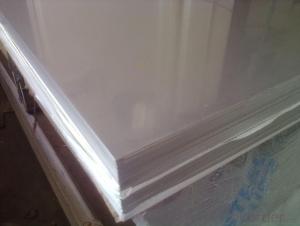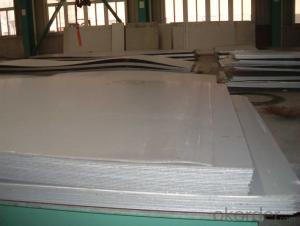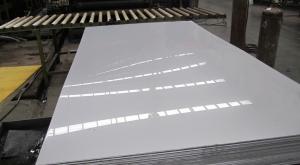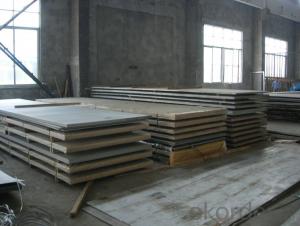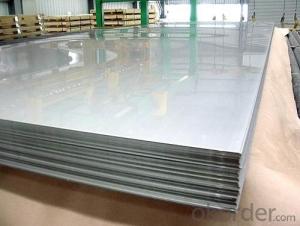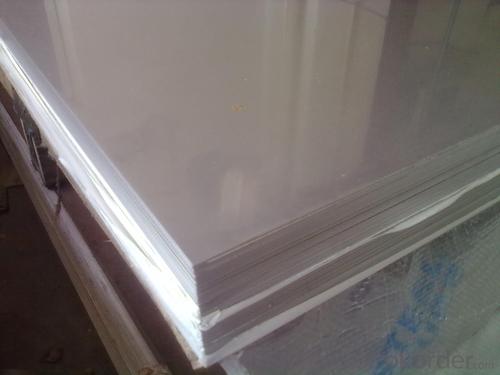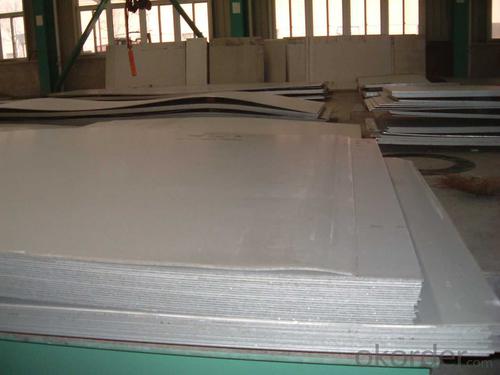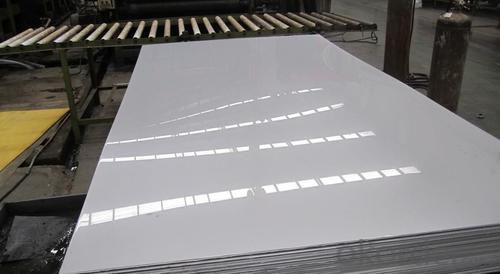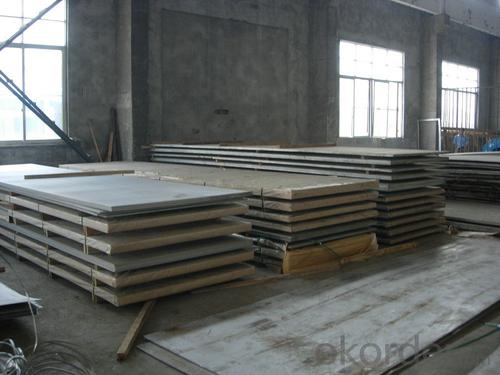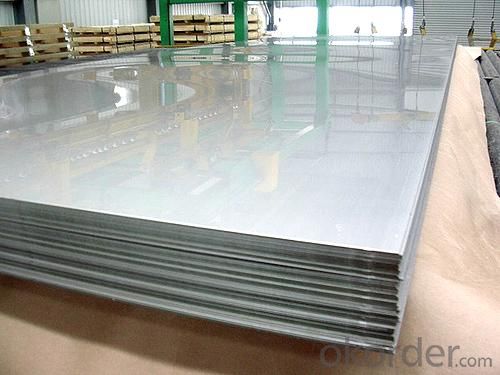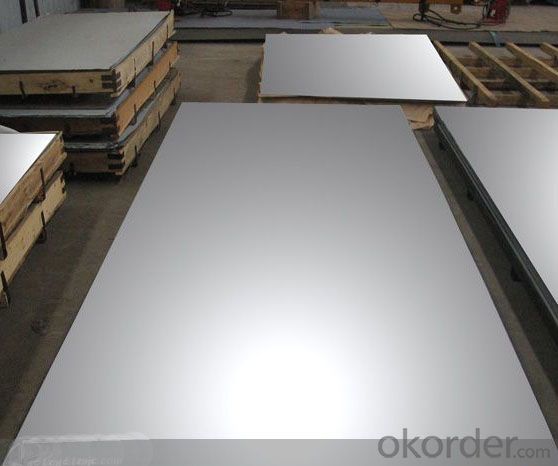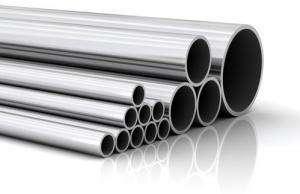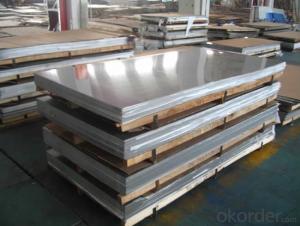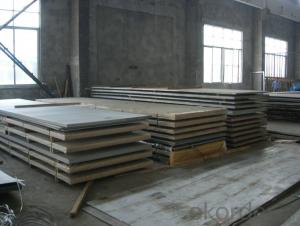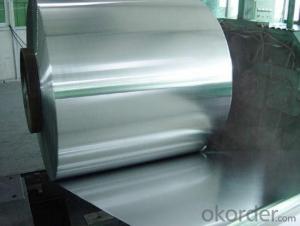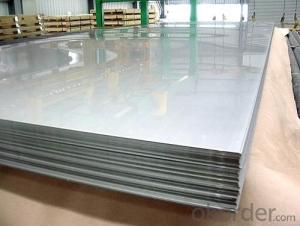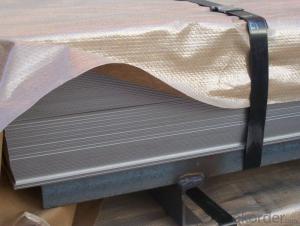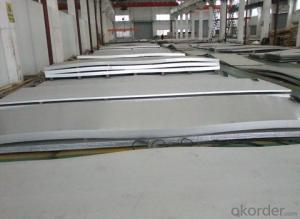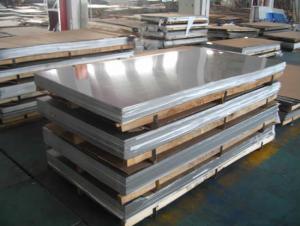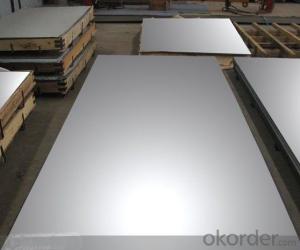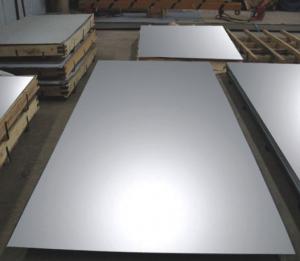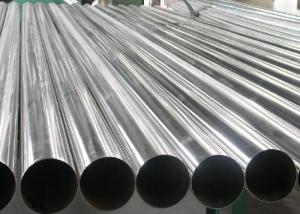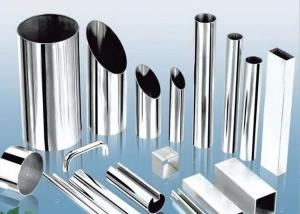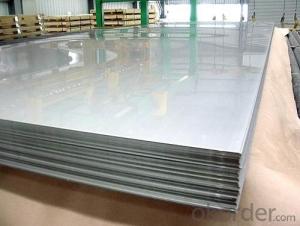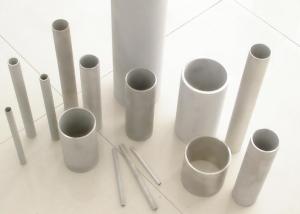Stainless Steel Sheet with Mill Test Certificate
- Loading Port:
- Shanghai
- Payment Terms:
- TT OR LC
- Min Order Qty:
- 10000 m.t.
- Supply Capability:
- 5000000 m.t./month
OKorder Service Pledge
OKorder Financial Service
You Might Also Like
Hot sale stainless steel sheet 201/202/304/304l/316/316l/430 in china alibaba
Product Description
Stainless steel sheet Detailed introduction
Description | steel sheet,hot rolled steel sheet,cold rolled steel sheet, steel sheet,sheet,steel plate |
Standard | ASME, ASTM, EN ,BS,GB,DIN, JIS etc |
Application | Steel sheet applies to construction field, ships building industry, petroleum & chemical industries, war and electricity industries, food processing and medical industry, boiler heat exchanger, machinery and hardware fields. |
Packaging | Standard export sea-worthy packing |
Delivery time | 10-30 days |
Quality | No.1 |
Productivity | 500 tons/Day |
Note | Our company has cooperative relation between the domestic agents. Stainless steel sheet can be made accordingto the customers requirements. Fasten delivery. Quality assured. |
Contacts | If you have any question,please feel free contact me. |
Stainless steel sheet surface finish characteristics
Surface finish | Characteristics and application |
2B | The surface brightness and flatness of no2B is better than no2D. then through a special surface treatment to improve its mechanical properties,No2B could nearly satisfy comprehensive uses. |
No.1 | Polished with abrasive belt of grit#100-#200, have better brightness with discontinuous coarse stria, used as inner and external ornaments for building, electrical appliances and kitchen utensils etc. |
No.4 | Polished with abrasive belt of grit #150-#180,have better brightness with discontinuous coarse stria, but thinner than No3, are used as bathtub buildings inner and external ornaments electrical appliances kitchen utensils and food processing equipment etc. |
HL | Polished with abrasive belt of grit #150-#320 on the NO.4 finish and has continuous streaks, mainly used as buildings ornaments elevators, door of building, frontal plate etc. |
BA | Cold rolled, bright annealed and skin-passed, the product have excellent brightness and good reflexivity like mirror, kitchen apparatus, ornament etc. |
8K | The product have excellent brightness and prefer reflexivity can to be the mirror. |
Application :
•Escalator, Elevator, Doors
•Furniture
•Production tools, Kitchen appliances, freezers, cold rooms
•Auto Parts
•Machinery and Packaging
•Equipment and Medical devices
•Transport system
Product Details:
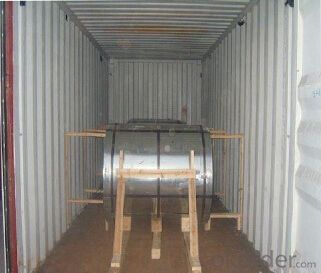
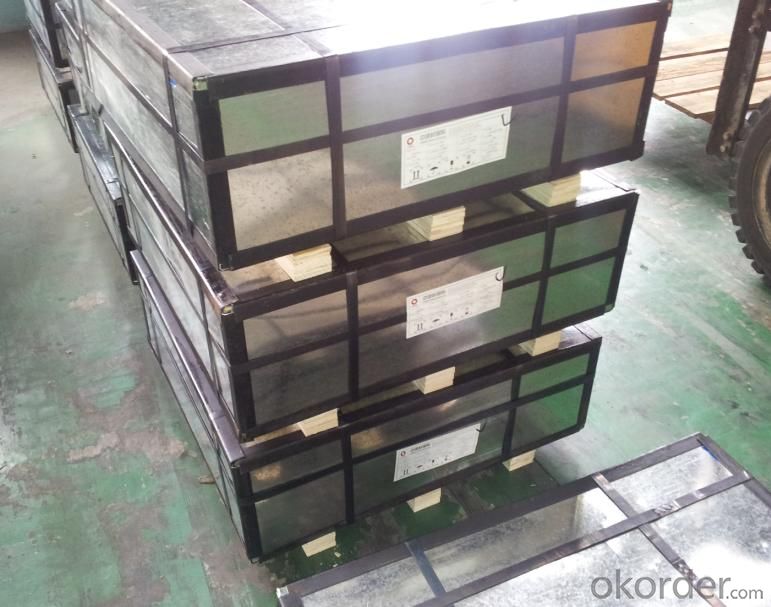
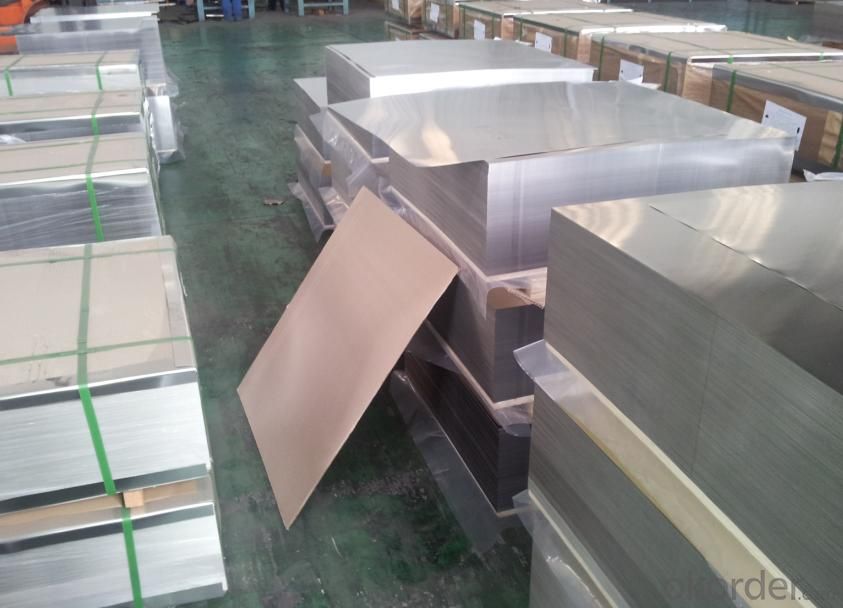
Sandard Seaworth Packing(wooden packing with water proof paper)


If you have any question about stainless steel sheets,donot forget to sending the email to Us! You will get the competitive Price and have a very good experience about the Buying Process! CNBM International Corporation is always your trustful friend!
- Q: How do you prevent discoloration on stainless steel sheets?
- To prevent discoloration on stainless steel sheets, there are several measures you can take. 1. Regular Cleaning: Proper and regular cleaning is essential to prevent discoloration on stainless steel sheets. Use mild soap or detergent and warm water to clean the surface. Avoid using abrasive cleaners or scrubbing pads as they can cause scratches that may lead to discoloration. 2. Avoid Harsh Chemicals: Avoid using harsh chemicals or cleaners containing chlorine, bleach, ammonia, or acids as they can cause pitting or corrosion on the stainless steel surface, leading to discoloration. Stick to mild and non-abrasive cleaners specifically designed for stainless steel. 3. Rinse Thoroughly: After cleaning, make sure to rinse the stainless steel sheet thoroughly with clean water to remove any residue from the cleaning solution. Residual chemicals can cause discoloration if left on the surface for an extended period. 4. Dry Completely: After cleaning and rinsing, it is important to dry the stainless steel sheet completely. Moisture left on the surface can lead to water spots or staining, especially in environments with hard water. Use a soft cloth or towel to remove all moisture, ensuring a dry and shiny surface. 5. Protective Coatings: Applying protective coatings or sealants designed for stainless steel can help prevent discoloration. These coatings create a barrier that protects the surface from environmental factors, such as humidity, oxidation, and staining. 6. Proper Handling and Care: Avoid dragging or sliding objects across stainless steel sheets, as this can cause scratches or abrasions that may lead to discoloration. Handle the sheets with care, using clean gloves or a soft, non-abrasive cloth to minimize the risk of surface damage. 7. Regular Maintenance: Regularly inspect the stainless steel sheets for any signs of discoloration or damage. Promptly address any issues by following the appropriate cleaning and maintenance procedures to prevent further damage and maintain the appearance of the stainless steel. By following these preventive measures, you can effectively minimize discoloration on stainless steel sheets and keep them looking clean, shiny, and stain-free for a longer period.
- Q: Can stainless steel sheets be used for fireplaces?
- Yes, stainless steel sheets can be used for fireplaces. Stainless steel is a popular material choice for fireplaces due to its high heat resistance and durability. It can withstand the high temperatures generated by the fire without warping or melting, making it a safe and reliable option. Stainless steel sheets can be used to construct the interior of the fireplace, including the firebox and chimney, or can be used as a decorative element on the façade of the fireplace. Additionally, stainless steel is resistant to corrosion and rust, ensuring that the fireplace will maintain its appearance over time.
- Q: What is the general width range of stainless steel sheet? What are the common widths?
- According to the agreement can be scheduled to open, usually to add money, commonly used thin 3mm below the general specifications commonly used, 1000*20001219*2438, 3mm or more commonly used specifications 1500*6000.
- Q: Are stainless steel sheets resistant to heat?
- Yes, stainless steel sheets are highly resistant to heat. Stainless steel is a type of steel alloy that contains a high percentage of chromium, which provides excellent heat resistance properties. This enables stainless steel sheets to withstand high temperatures without warping, deforming, or losing their structural integrity. Stainless steel sheets are commonly used in applications that require heat resistance, such as in the construction of ovens, cookware, industrial equipment, and automotive parts. Additionally, stainless steel sheets also have good oxidation resistance, which means they can maintain their appearance and properties even at elevated temperatures. Overall, stainless steel sheets are an excellent choice for applications where heat resistance is a crucial requirement.
- Q: What are the different types of edges available for stainless steel sheets?
- Stainless steel sheets can have a variety of edge types, including mill edges, slit edges, deburred edges, sheared edges, and rounded edges.
- Q: How do stainless steel sheets compare to other materials like aluminum or carbon steel?
- Stainless steel sheets, when compared to other materials like aluminum or carbon steel, offer several distinct advantages that make them a preferred choice in various industries. 1. Corrosion Resistance: Stainless steel sheets are highly resistant to corrosion, making them suitable for applications where exposure to moisture or corrosive environments is common. Aluminum, while also corrosion-resistant, is not as durable as stainless steel in harsh conditions, and carbon steel is prone to rusting. 2. Strength and Durability: Stainless steel sheets are renowned for their strength and durability. They have a higher tensile strength than aluminum, making them more resistant to bending and deformation. Carbon steel has similar strength characteristics but is more susceptible to corrosion, especially in exposed applications. 3. Heat Resistance: Stainless steel sheets can withstand high temperatures without losing their structural integrity. They have excellent heat resistance properties, making them ideal for applications involving heat transfer or exposure to extreme temperatures. Aluminum, on the other hand, has lower heat resistance, while carbon steel can lose strength and become brittle at high temperatures. 4. Hygiene and Cleanliness: Stainless steel sheets are non-porous and easy to clean, making them a popular choice in industries where hygiene is critical, such as food processing or medical equipment. Aluminum and carbon steel, in comparison, may have more porous surfaces that can harbor bacteria or contaminants. 5. Aesthetics: Stainless steel sheets offer a sleek and modern appearance that is often desired in architectural and design applications. They can be easily polished or finished to achieve a variety of decorative effects. Aluminum and carbon steel sheets, while also versatile, may not provide the same level of aesthetic appeal. However, it's worth noting that stainless steel sheets can be more expensive than aluminum or carbon steel due to their superior properties. The choice of material ultimately depends on the specific requirements of the application, including factors such as cost, strength, corrosion resistance, and aesthetics.
- Q: What is the maximum width of stainless steel sheets available?
- The maximum width of stainless steel sheets commonly available varies, but it typically ranges from 48 to 72 inches.
- Q: Can stainless steel sheets be used for food storage containers?
- Food storage containers can indeed be made from stainless steel sheets. Many people choose stainless steel for their food storage containers because it is durable, non-reactive, and resistant to corrosion. The stored food does not acquire any taste or odor, making it safe to store for extended periods. Moreover, stainless steel is easy to clean and maintain, ensuring optimal hygiene for food storage. Furthermore, stainless steel containers are often favored for their eco-friendly characteristics as they can be reused, thereby reducing the need for single-use plastic containers. In conclusion, stainless steel sheets are a dependable and appropriate option for food storage containers.
- Q: Are stainless steel sheets resistant to high-pressure environments?
- Yes, stainless steel sheets are highly resistant to high-pressure environments. Stainless steel is a strong and durable material that can withstand the pressure exerted by various industrial processes, such as hydraulic systems, chemical processing plants, and oil and gas pipelines. It is known for its excellent tensile strength and ability to maintain its structural integrity even under extreme pressure conditions. Additionally, stainless steel is also resistant to corrosion, which further enhances its suitability for high-pressure environments where exposure to moisture or chemicals is common. Overall, stainless steel sheets are widely used in industries that require materials capable of withstanding high-pressure conditions due to their exceptional strength and resistance properties.
- Q: What's the difference between galvanized steel and stainless steel?
- Stainless steel refers to the air, steam, water and other weak corrosive medium and acid, alkali, salt and other chemical corrosive medium corrosion of steel, also known as stainless acid resistant steel. In practical application, the steel which is often corroded by weak corrosive medium is called stainless steel, and the steel which is resistant to chemical medium is called acid resisting steel.
Send your message to us
Stainless Steel Sheet with Mill Test Certificate
- Loading Port:
- Shanghai
- Payment Terms:
- TT OR LC
- Min Order Qty:
- 10000 m.t.
- Supply Capability:
- 5000000 m.t./month
OKorder Service Pledge
OKorder Financial Service
Similar products
Hot products
Hot Searches
Related keywords
